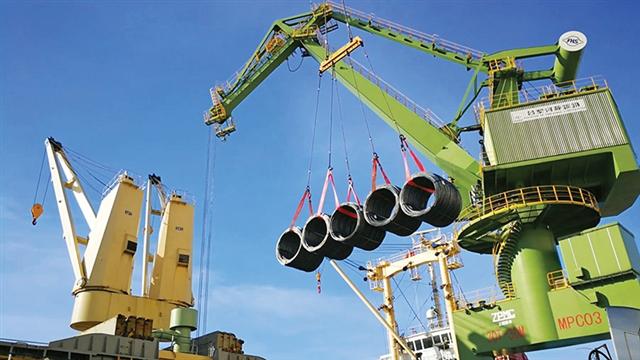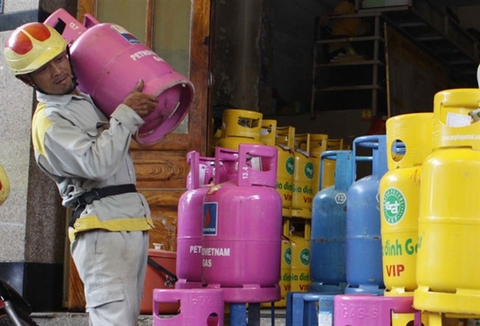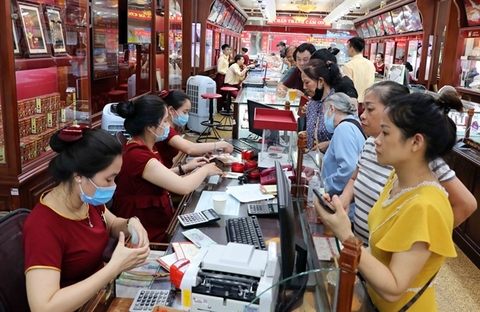Steel reliance to be reduced in Ha Tinh
Steel reliance to be reduced in Ha Tinh
The central province of Ha Tinh is striving to change for the better with its first-ever master planning expected to be adopted this year, with focus to be laid on the development of steel, energy, service, tourism, and logistics as the key pillars. However, should the province continue relying on steel manufacturing, which is prone to environmental pollution?

The master plan will see Ha Tinh prioritise development of manufacturing, logistics, services, and more. Photo: Le Toan
|
|
Nguyen Chi Dung - Minister of Planning and Investment, Chairman of the Appraisal Council
Vietnam currently has five big opportunities – stable political, social, and economic environment in addition to improved infrastructure; 14 free trade agreements that the country has inked with partners for further development; the Fourth Industrial Revolution; a gradual shift in trade and investment structures favourable for Vietnam; and a golden population of nearly 100 million people with big consumption power. To materialise these opportunities, one of the most important things is to conduct planning effectively. Planning is extremely important to all sectors, all localities, and the whole country. If we want to go fast, we must have a correct path. If we want to have a correct path, we must have sound solutions, places to go to, and the means to go effectively. The Law on Planning was promulgated by the National Assembly in 2018. For the law to be implemented well, planning for sectors and localities must be made. Planning is one of the most important jobs that we must do now and in the time to come. We are reshuffling all planning-related activities in the country to put them right in accordance with the law. Planning of all sectors and territories must be integrated into a multi-sector master planning covering all development space of localities. However, it would be difficult to demonstrate all integrated content of sectors in a master planning as it has to ensure close planning management and high flexibility. At present, 61 out of 63 cities and provinces nationwide have either had their master planning adopted or been building up their master planning. However, only Bac Giang and Ha Tinh provinces have thus far had their master planning appraised. |
The hall of the Ministry of Planning and Investment (MPI) last Wednesday was packed with experts and scientists who were attending a meeting of the Appraisal Council of the central province of Ha Tinh’s master planning for the 2021-2030 period, with a vision until 2050. The draft planning will be submitted to the prime minister for consideration and approval.
In line with the Law on Planning, the master planning is built up by US-based global management consulting firm Boston Consulting Group in combination with Ha Tinh province and feedback from ministries, experts, and scientists.
The planning will pave a new way for Ha Tinh, whose economy is flourishing with a focus on industrial development, to make great strides forward to become a developed locality over the next decade. It will also help the province fully tap into its great potential.
In the 2011-2020 period, Ha Tinh developed vehemently, from a poor province to one of the localities taking the lead in economic growth. Thanks to great efforts in attracting foreign direct investment, improving infrastructure, and removing difficulties for the business community, Ha Tinh has made major contributions to the socioeconomic development of the north-central region.
Ha Tinh hit an average annual growth rate of 11.5 per cent in the 2011-2019 period and a GRDP scale of 78 trillion ($3.39 billion) in 2019.
“In the 2021-2030 period, the province continues setting a goal of high economic growth and becoming one of the development pillars of the north-central region and the central coastal region. Thus, Ha Tinh needs high-quality master planning in order to materialise this ambitious goal,” said Hoang Trung Dung, Secretary of Ha Tinh Party Committee.
Ha Tinh borders Nghe An province to the north, Quang Binh province to the south, Laos to the west, and the East Sea to the east with a 137km coastline.
Key focus
Ha Tinh has set an ambitious target that its per capita regional GDP will be higher than that of north-central provinces by 2025. It will become a relatively developed locality by 2030 with per capita regional GDP of nearly $7,000, which will soar to $17,700 by 2045 and $26,000 by 2050.
Under the draft master planning, Ha Tinh will prioritise the development of several key sectors: steel manufacturing; energy development; agro-forestry-fishery; commerce, services, and logistics; and also tourism.
The planning also determined three urban centres, three economic corridors, and one pivotal centre serving as the key driving force behind Vung Ang Economic Zone.
To ensure sufficient energy for these initiatives, Ha Tinh has also set a goal in the draft master planning that besides the existing 1,200MW coal-fired Vung Ang 1 power plant, the Formosa first-phase 650MW thermal power plant, and other current hydropower and solar power plants, the province will in the 2021-2030 continue construct others. These are the 1,200 coal-fired Vung Ang 2 thermal power plant, the gas-fired Vung Ang 3 thermal power plant, and the gas-fired 600MW second-phase Formosa thermal power plant. Furthermore, the province will also build four wind power plants with total capacity of 958MW and four solar power plants at a total of 799MW.
However, Dinh Trong Thang, director of the MPI’s Department of Planning Management and representative of the master planning’s Appraisal Council, said that in order to meet the requirements with a huge need for electricity, Ha Tinh should combine with the Ministry of Industry and Trade to make further studies to “clearly determine the demand and capacity of power production in line with the national power planning for the 2021-2030 period whose draft has been finalised.”
Meanwhile, according to Minister of Natural Resources and Environment Tran Hong Ha, because Ha Tinh has a long coastline and a large sea area, it should focus on developing a maritime economy featuring tourism, seaports, and offshore wind power projects.
“You are heavily focusing on producing electricity from oil, coal, and gas without paying significant attention to offshore wind power potential, which is great now and can attract many investors,” Ha said. “If offshore wind power is fully tapped into, in addition to other sources of energy and development of logistics and seaports, Ha Tinh will be quite different from other localities and woo more investors.”
Senior economic expert Cao Viet Sinh also commented that the draft master planning is covering too many sectors. “It will be difficult to simultaneously develop these sectors. Ha Tinh should reconsider what specific sectors will be specified for prioritised development,” he said.
According to Sinh, in the context of Industry 4.0, Ha Tinh, like many other localities nationwide, must roll in the trend of innovation, startup, and digital transformation.
“It seems that the draft master planning still lacks this important thing without which no locality can develop strongly and attract high-quality investors, and tap into all of its potential,” Sinh said.
Figures from the MPI showed that as of February 20, Ha Tinh was home to 79 foreign-invested projects registered at $11.74 billion.
Depending on steel
At the meeting of the Appraisal Council last week, Ha Tinh was advised not to continue relying largely on steel development for fear of environmental pollution, and instead to develop energy and logistics as a key driver for its development over the next decade.
Over past years, Taiwanese-backed Formosa Ha Tinh Steel Corporation (FHS) has been operating in the province a large iron and steelmaking plant and seaport complex worth nearly $12.8 billion. The project covers a total area of just over 3,300 hectares, including around 2,000ha of land and 1,300ha of sea surface.
FHS has completed the first-phase construction of the gigantic project including a steel plant, a 11-pier seaport, and a 650MW thermal power plant. Last year, FHS’s steel billet capacity hit 5.85 million tonnes. The company consumed 5.9 million tonnes of steel products with total revenue of $2.9 billion, and state budget contribution of $440 million.
FHS is employing over 7,000 labourers including nearly 6,400 Vietnamese, of whom 76 per cent are Ha Tinh locals.
It is expected that in this year, the total steel billet output will be 6.5 million tonnes, with a consumption volume of 6.5 million tonnes of finished products, a total revenue of about $3.7 billion and contribution of $240 million to the local coffers.
According to Ha Tinh’s Statistics Department, in 2020, the province’s total export turnover hit $1.2 billion, in which 85.8 per cent was from FHS’ steel and steel ingot exports valued at $938 million. Meanwhile the province’s total import turnover reached $2.2 billion which was almost spent on importing input materials for FHS’ production.
Hoang Van Quang, who is director of Ha Tinh’s Department of Industry and Trade, said FHS’ projects have helped boost the province’s economic growth rate by nearly 6 per cent a year in the 2016-2020 period, expand the provincial economy’s scale by over 1.5 times – the regional GDP rose from over VND55 trillion ($2.39 billion) in 2015 to nearly VND84 trillion ($3.65 billion).
However, an MPI senior official warned at the meeting last week, “The world is limiting development of steel manufacturing projects as they can cause environmental pollution. If Ha Tinh continues significantly relying on Formosa’s performance, it will be not good. If the company faces difficulties, the province’s growth will be seriously hurt.”
In 2016, Formosa Ha Tinh Steel had paid $500 million in damages and admitted that its steel plant had caused massive fish deaths along a 200km stretch of coastline that occurred that April. Currently, the company has met standards on wastewater treatment.

























